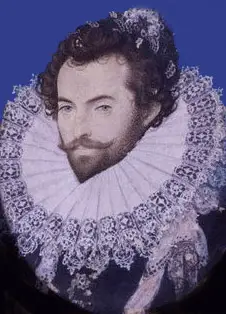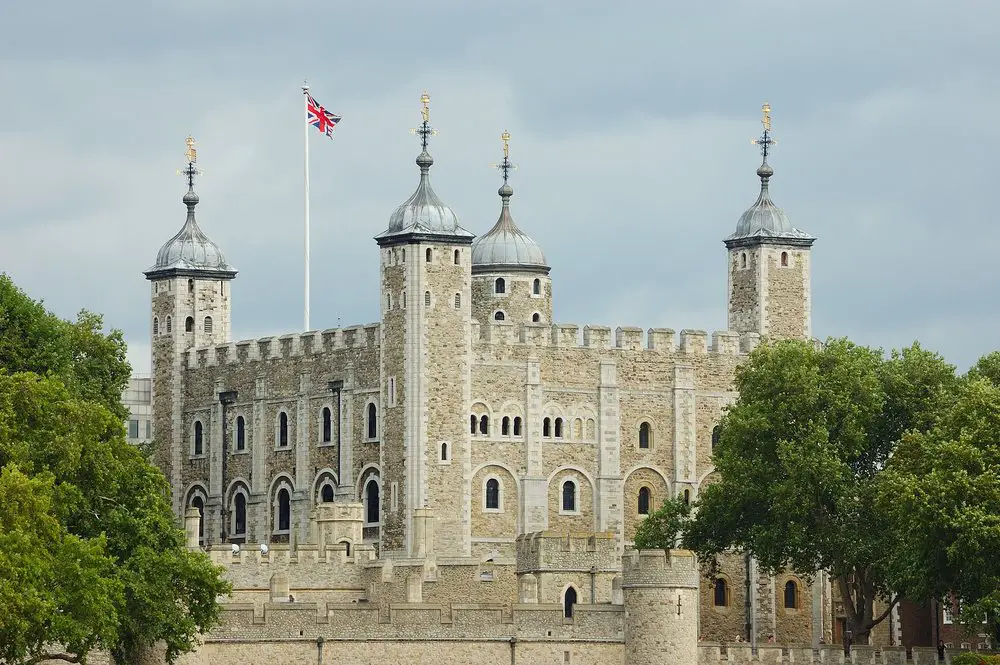Mary was renowned for her beauty, being described as "a Paradise - tall, slender, grey-eyed, possessing an extreme pallor" by the Venetian ambassador, and her motto was La volenté de Dieu me suffit (The will of God is sufficient for me).
In 1507, Mary was betrothed to Charles of Castile (the future Charles V Holy Roman Emperor), and their wedding was planned for 1514. However, the betrothal was cancelled due to Henry VIII’s diplomatic dealings and, much to Mary's horror, she was betrothed instead to the fifty-two-year-old King Louis XII of France, a man thirty-four years her senior, as part of Cardinal Wolsey’s peace treaty with France.
Mary married King Louis XII of France in Abbeville on 9th October 1514 when she was just eighteen, but the marriage was short-lived, with the king dying just a few months later, on 1st January 1515. Mary had been in love with Charles Brandon, Duke of Suffolk and a great friend of Henry VIII, and before her marriage to Louis XII she had made her brother promise that if she married the French King and outlived him, that she could choose her next husband.
 Mary was kept isolated from men for six weeks at the Palais de Cluny to see if she was carrying the heir to the French throne, but then her real love, Charles Brandon, was sent to France to escort her home. Mary and Charles Brandon took a huge risk by secretly marrying in France, without her brother's permission, something which could be classed as treason. Henry VIII was furious but his love for his favourite sister and his friendship with Brandon led to him forgiving the couple, and they were officially married at Greenwich Palace, 13th May 1515. Although she was now the Duchess of Suffolk, Mary was still referred to as the "French Queen".
Mary was kept isolated from men for six weeks at the Palais de Cluny to see if she was carrying the heir to the French throne, but then her real love, Charles Brandon, was sent to France to escort her home. Mary and Charles Brandon took a huge risk by secretly marrying in France, without her brother's permission, something which could be classed as treason. Henry VIII was furious but his love for his favourite sister and his friendship with Brandon led to him forgiving the couple, and they were officially married at Greenwich Palace, 13th May 1515. Although she was now the Duchess of Suffolk, Mary was still referred to as the "French Queen".
Mary had four children by Charles Brandon, Duke of Suffolk, but only two daughters, Frances and Eleanor, survived childhood. Frances married Henry Grey, Marquis of Dorset, and was the mother of Lady Jane Grey. Eleanor married Henry Clifford, the 2nd Earl of Cumberland.
Mary became ill in 1533, and died on 25th June (some sources say 24th) at Westhorpe, Suffolk. She was laid to rest in the abbey at Bury St Edmunds, Suffolk, and then moved to St Mary’s Church in Bury St Edmunds during the Dissolution of the Monasteries.
You can find out more about Mary in the following videos and articles:
- The Marriage of Mary Tudor, Queen of France, and Charles Brandon, Duke of Suffolk
- 6 November 1514 – The Entry of Mary Tudor, Queen of France, into Paris
- 25 June 1533 – The death of Mary Tudor, Queen of France
- Mary Tudor, Queen of France video
- Mary Tudor, Queen of France, Quiz
- Mary Tudor, Queen of France by Sarah Bryson
Extract from On This Day in Tudor History by Claire Ridgway.




Now here is one Tudor I can really dig. She may have been forced to accept the elderly Louis Xii of France but she rose to the occasion. Then she took control of her life by marriage to her true love, Sir Charles Brandon, Duke of Suffolk, her brother, King Henry’s best mate. She was a beautiful and gifted young woman, very much loved by Henry Viii and even as Duchess of Suffolk she was close to him. As Duchess on official visits she was still important, in her county tours she was walmly welcomed and hailed. Mary was a supporter and friend of Queen Katherine of Aragon and opposed Henry in his divorce. This put Suffolk himself in a difficult position. He was devoted to Henry and he loved his wife. He also admired the Queen and he disliked her potential replacement, Anne Boleyn. He could go only so far with opposition before it became dangerous; he could openly argue with Henry and did so, but ultimately he had to accept his will as the King’s man. Mary fell out with her brother and withdrew to her home, partly because her health was in decline and it was hard for her to see Henry making eyes at her previous attendant. Sadly Mary died prematurely of consumption in June/July 1533 at her home in Westhorpe. Charles had been forced to attend the coronation of Anne Boleyn as High Constable but he left for home soon afterwards. Mary had received a last letter and gift from Henry of strawberries, wishing her well. It would be nice to think that she felt reconciliation for her brother, but sad that Henry pushed her away by his behaviour during her last few years of her life, mainly because of his abandonment of Katherine for Anne.